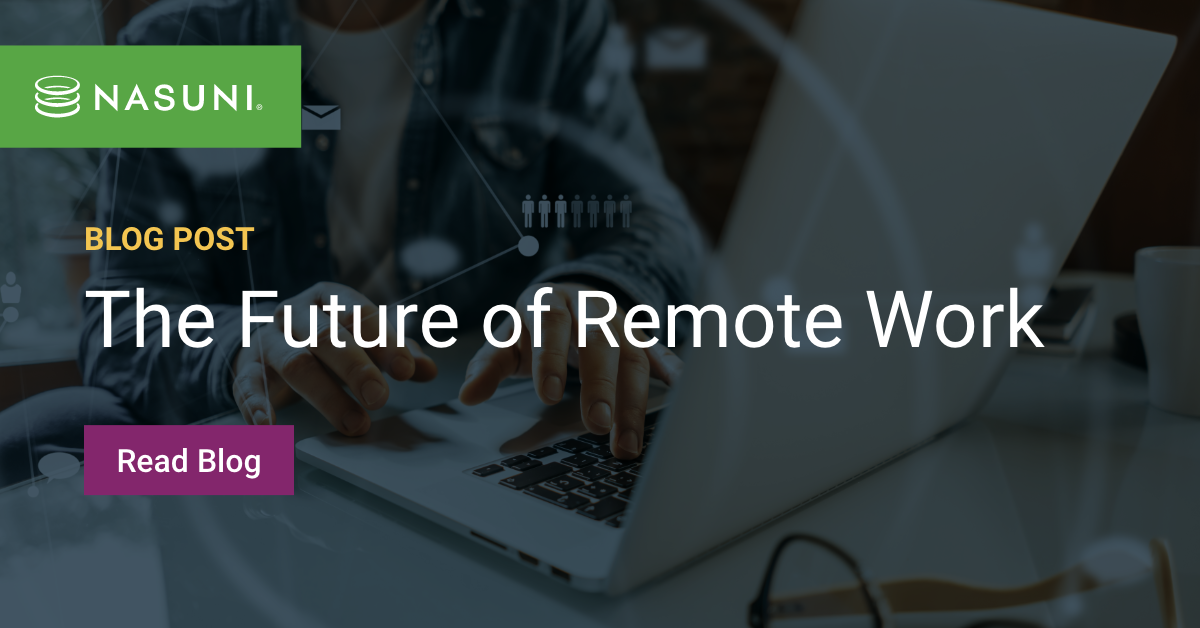The Future of Remote Work
July 26, 2021 | David Grant
Over a year has passed since I wrote about how our company shifted to a remote workforce model in less than 24 hours. The pandemic forced us all to evolve quickly. Some organizations were more prepared than others. At the time, though, I don’t think anyone really had a sense of how long this new WFH arrangement would last or that it would drive permanent change in how we work.
The numbers are startling. In 2017, Microsoft Teams had 2 million users. In the second half of 2020, the platform is now used by 115 million users! Remote work is here to stay.
Another massive growth area has been Virtual Desktop Infrastructure (VDI) and Desktop as a Service (DaaS) solutions. Organizations had to find ways to ensure that workers could remain productive as they shifted out of the office and into their homes or other remote locations. In the past, VDI deployments were sold as IT cost savings efforts, which didn’t always play out. Performance suffered as well, since the virtual infrastructure would have to reach over the wire to access the files end users needed.
Now the game has changed. Desktop virtualization is more about business continuity and remote productivity, not cutting costs, and our cloud-based file system accelerates access to files, making the platforms perform more like familiar office desktops. The pandemic forced many companies to move in this direction – even if they were reluctant – and this shift, like videoconferencing, is probably permanent. According to Gartner, the number of DaaS users could grow by over 150% between 2020 and 2023.
We’re seeing this with our own customers. We can’t share all of their stories, but here are a select few public ones that illustrate the kinds of things we’re tracking across industries:
- Global oil and gas services firm Penspen rapidly transitioned to VDI at the start of the pandemic, standing up Windows Virtual Desktop (WVD) instances in the Azure regions closest to its employees, then pointed them back to Azure-based Nasuni appliances for fast access. According to Andrew Bond, director of IT at Penspen, the transition was seamless. “We ran some tests, spun up resources in the key regions, and then optimized them as our design teams started to work from home,” Bond recalls. “They simply logged on, and it was as if they were working in the office.”
- Professional services provider SDL transitioned 1,500 global workers to Amazon WorkSpaces over a weekend. “Nasuni was essential in our transition to an all-remote workforce as the COVID-19 pandemic spread. Thanks to Nasuni and Amazon WorkSpaces, we were able to set up virtual desktops for 1,500 essential employees over a weekend,” states John Flynn, head of Technical Architecture at SDL.
- After pandemic-related events shut engineering giant Ramboll out of a key data center, the firm deployed a Nasuni VM in Azure and restored access to 300 remote users within two hours.
In each case, the combination of Nasuni for cloud file storage and a powerful cloud VDI provider allowed these firms to maintain productivity in difficult circumstances. That brings me to the other transformative change at work here — the incredible climb in cloud adoption.
No one’s dipping their toes into the cloud world anymore. They’re diving in. We’re constantly hearing about wholesale shifts away from traditional on-premises storage like NetApp and Windows file servers and toward cloud-centric infrastructure. Files are often the hardest piece of the puzzle. Enterprises need to be able to deliver file data to their users when they need it and where they need it with great performance, and cloud file storage makes that possible.
Luckily, the major cloud providers were ready for this shift. Our partnerships with the leading global object storage providers give us unprecedented coverage. Here’s a rough map of the areas within which Nasuni can deliver fast access to your files:

Our new partnership with Google strengthens this offering. As Google’s Brian Schwarz relayed in his conversation with my colleague Russ Kennedy, Google Cloud makes use of the same network that evolved to support YouTube. The same technology that loads a completely obscure video in less than a second works to ensure users can access the files they need as quickly as possible.
The shift to remote work is here to stay and Nasuni is here to handle the files.
The world of work has changed forever, as hybrid and fully remote models are here to stay. End users have […]
In this blog you'll learn how Nasuni and Amazon Workspaces solves for the main problem with Cloud VDI deployments – end user performance.
Learn how Nasuni and Amazon Workspace helped SDL quickly transition to an all-remote workforce during the COVID-19 pandemic.


